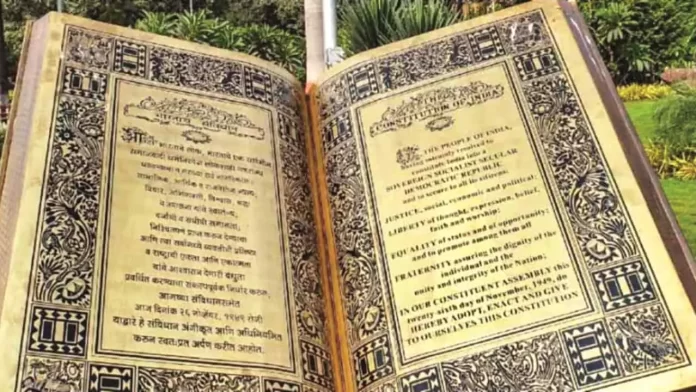By Sujit Bhar
The Constituent Assembly of India gave us our Constitution, which was adopted by the country on November 26, 1949. That document gave the nation the power to declare itself a sovereign, democratic republic on January 26, 1950, the day the Constitution came into effect across the country.
While the country has been celebrating its Republic Day with much fanfare, the entire justice system of India shows its gratitude in the adoption of the Constitution on November 26, 1949, now called Constitution Day or Samvidhan Divas.
Constitution Day is important, because of the document it honours. Our Constitution is the most important and overarching legal, social and political document of this vast nation, and together with its many amendments, allows us to live free lives in a free country, allowing us certain rights that are protected by the courts and which even our legislature and executive swear to protect on oath.
Samvidhan Divas has begun to be celebrated as a proper national pride day in recent times, and this year, too, new vistas in legal and social perspectives will be visible as top functionaries from the judiciary and the legislature gather in celebration.
These days, the Supreme Court of India has taken up its job of preserving the sanctity of the Constitution in right earnest. Only the Supreme Court and the High Courts of the country are empowered to deal in constitutional matters, to interpret the document’s letters within a given context. Hence, starting from the Supreme Court, they act as sentinels at the gate of the supreme authority.
Constitutional matters are referred to Constitution benches, and in the first 25 years after the first Republic Day, such benches convened frequently to decide matters of public importance. With the maturing of the Constitution with contemporary inputs, in the first half of the 1960s, such benches decided an average of 134 cases. The number of such benches and consequential verdicts had dropped to—according to a study—6.4 in the second half of the 2000s.
With the advent of 2023, came a breath of fresh air in the judiciary and Constitution benches have become more common. Till the time of the study, Constitution benches had assembled 55 times and delivered 13 judgements—easily among the most active they have been in a decade. That number looks even better today.
The study found that as of July 2023, pendency of five-judge bench cases had come down to 33 from 43 at the beginning of the year and were quickly moving further down. That is a commendable state of affairs under Chief Justice of India DY Chandrachud.
With this atmosphere, the sanctity of Samvidhan Divas gains predominance. This day was not celebrated with such pomp and grandeur earlier. The Supreme Court Bar Association decided to make this day special under LM Singhvi, and the overarching reasons for this were not just to review the state of law and administration of justice, but to also suggest ways and means to improve our legal and judicial system and strengthen the relationship between the bar and the bench.
The last item actually helps promote and strengthen the independence of the judiciary and frees the legal profession from many age-old shackles.
Most importantly, though, was the objective that the legal and judicial system should become an effective instrument to serve the people. The pole star for this noble profession has been the writing of BR Ambedkar, the principal architect of our Constitution. He had said: “We must note that our political democracy cannot last unless there lies, at the base of it, a social democracy. What does social democracy mean? It means a way of life which recognises liberty, equality and fraternity as the principles of life.”
It took the Constituent Assembly two years, 11 months and 17 days to complete its historic task of drafting the Constitution. During this period, it held 111 sessions, covering a total of 165 days. Of these, 114 days were spent on the consideration of the Draft Constitution. Members were chosen by indirect election by the members of the Provincial Legislative Assemblies. The arrangement was: 292 members were elected through the Provincial Legislative Assemblies; 93 members represented the Indian Princely States; and four members represented the Chief Commissioners’ Provinces. The total membership of the Assembly thus was to be 389.
However, as a result of the Partition under the Mountbatten Plan of June, 3, 1947, a separate Constituent Assembly was set up for Pakistan and representatives of some Provinces ceased to be members of the Assembly. As a result, the membership of the Assembly was reduced to 299.
The outcome of such dour, yet enlightening work was a brilliant document which still serves 1.4 billion countrymen. That makes November 26 a day worth celebrating.


